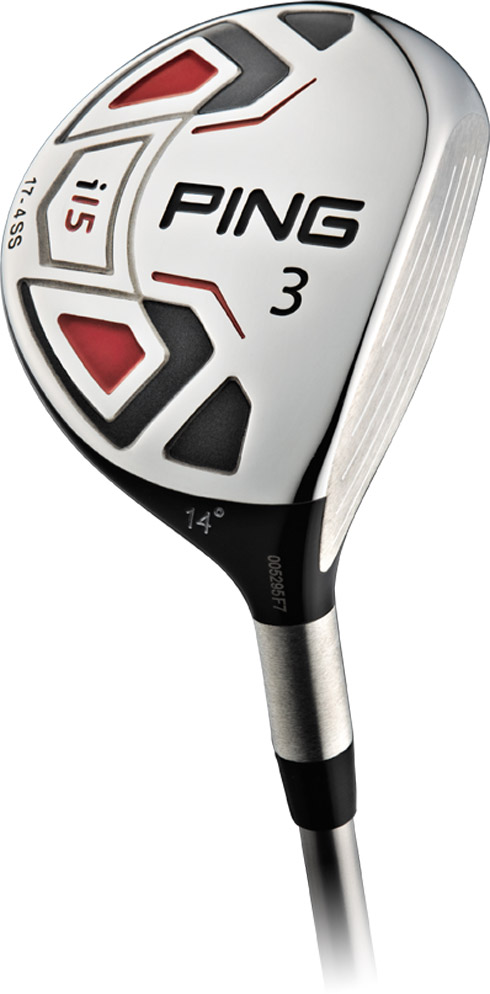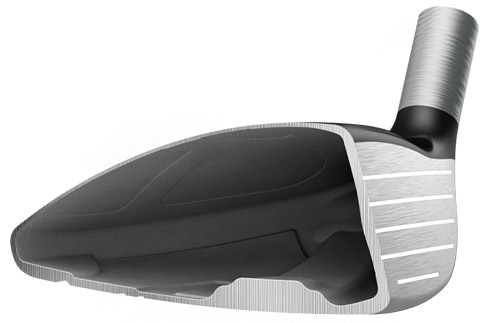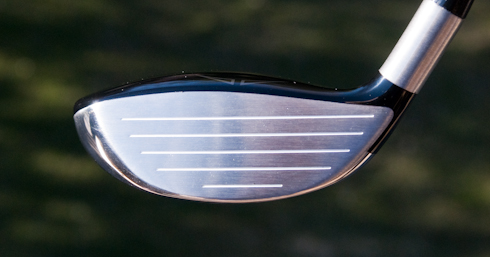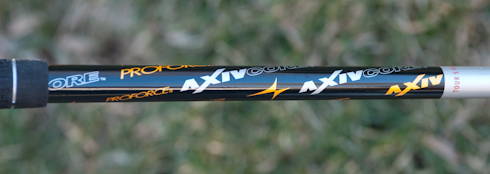 The newest line of PING woods comes in the form of the i15 line. The sleek design and profile of the i15 fairway metal is right in line with the current trend you see in the bags of professionals on tour.
The newest line of PING woods comes in the form of the i15 line. The sleek design and profile of the i15 fairway metal is right in line with the current trend you see in the bags of professionals on tour.
I’ve sampled many fairway metals over the past few years. Going from a Callaway Steelhead to a TaylorMade r7 before settling on my current Callaway X-Hot. I even tested other Callaways and a Titleist during that time. None could really shake the Callaway X-Hot as it did a great job off the tee, which is where my fairway metals get the most use.
So now comes the PING i15. With some specific design features that intrigued me I was eager to put it to use. Whether or not it could supplant the X-Hot was the big question. Read on to find out.
Design, Technology, and Specs
The PING G10 driver has had quite a bit of success over the past couple years and has now morphed into the G15. For some reason I never saw as many G10 fairway woods in the bags of the better players around the club or even on Tour. The new I series is meant to penetrate that market.
The first change between the G series is that the head size is smaller. The 15.5 degree lofted i15 is 13cc smaller (154cc vs 141cc.) This is even a much, much bigger difference than my Callaway X-Hot which tops out at 202cc. Which is over 43% bigger than the i15. That’s a lot of figures in only a couple sentences. Just know that there aren’t many other fairway metals on the market as small.
Like most fairway metals on the market, and in the PING lineup, the head of the i15 uses a 17-4 Stainless Steel metal. The shape is slightly elongated from heel to toe to add a bit of forgiveness. The custom internal weighting will help produce lower spinning shots with a more penetrating trajectory.

Here you can see the internal weighting that PING has used to help control the spin and trajectory.
The standard shaft for the PING i15 is their own home-grown TFC 700F. The torque gets lower as you go from regular to extra stiff and heavier in weight at the same time. Another option is a Mamiya AXIVcore which keeps the torque and weight the same throughout shaft flex. You can also branch out to just about any shaft you see on tour including the Aldila NV series, Fujikura, or Grafalloy shafts. The shaft included in this review was the Fujikura Banzai. For this review, I received the Mamiya AXIVcore.
Look and Feel
At first glance, I was extremely pleased with the look of the i15. The one word that always comes to mind when I look at it is sleek. I’ve mentioned earlier how small the size is and it translates as well when you are standing over it. If I had to make a direct comparison to a current fairway wood on the market, it would have to be the Titleist series. In particular, the F2 line because of its size.

The bottom of the i15 is much flatter than the Callaway clubs I usually play.
In my previous fairway metals, Callaways mostly, I liked the rounded leading edge to help hitting the ball off the deck. I felt like I could dig into the ball a bit. That hasn’t been an issue for me nearly as much lately as I don’t use the fairway metal much off of the deck as I have in the past. Its main purpose now is off of the tee and my hybrid serves me from the fairway or rough.
Why do I mention this? Because the i15 has a flat and sleek (there’s that word again) look. Instead of a rounded leading edge, it is straight like the other (see Titleist) high-performance/tour style fairway woods.
 When I addressed the ball with the i15, the first thing I noticed is that the shaft is a standard length. The X Hot is slightly longer than normal and almost feels like a driver. Once I got over that, I was focused on how the club felt behind the ball. The surprise to me was that on thin lies, it felt really good. I mentioned previously how I preferred the rounded edge. After a couple swings and setting up to the ball again and again, the i15 felt as good or better than the X Hot.
When I addressed the ball with the i15, the first thing I noticed is that the shaft is a standard length. The X Hot is slightly longer than normal and almost feels like a driver. Once I got over that, I was focused on how the club felt behind the ball. The surprise to me was that on thin lies, it felt really good. I mentioned previously how I preferred the rounded edge. After a couple swings and setting up to the ball again and again, the i15 felt as good or better than the X Hot.
At impact, the feel and sound was solid and more of a crack than a hollow “ping” sound. It was very easy to detect where I struck the ball on the face of the club. With my X Hot I do not get near that feeling. This is one of the big draws, for me, to the i15. Not only do you get a great feeling off the face of the club but you get immediate feedback.
Performance
There are two distinct areas that a fairway wood serves to just about any golfer. First, and most obviously, is as a club that lets you advance the ball as far as you can off of the ground. Second, as a club to hit off the tee – or a backup to your driver for some people. PING’s i15 did a good job in both.
Being smaller, my biggest concern was hitting the ball off of the tee. Like I said before, I don’t hit the fairway metal off of the deck much so the tee performance is just as important (or more) as how I can hit it from the ground. In my review of my current fairway metal, the X Hot, I gave it extremely high marks in this category. The PING i15 performed well, but couldn’t quite match the X Hot.
First, the X Hot was a bit more forgiving. I didn’t mis-hit many shots with the i15 but those slight misses didn’t go quite as far off the tee as I would hope. In a sequence of about 10 shots with each club the result was very consistent. The i15 was just slightly less forgiving. To tell the truth though, I was impressed. Given its size, I thought it would be much harder to consistently hit. After just a few swings I wasn’t afraid of hitting this club.
Off of the deck it was a different story. I expected the i15 to be a bit better in that area and I was spot on. While the X Hot does well in this regard, the i15 is even better. I dropped a bunch of balls on some tight lies on the range and was able to get into the ball easily and up into the air quickly with the PING i15. While I haven’t had problems with the X Hot, I can’t seem to reproduce the same launch angle. Now the i15 is 15.5 degrees and the X Hot is 15, so that could be part of the explanation but the difference was so much that I can’t really attribute that to just a half of a degree difference in the loft.

All I ask of a shaft is that it lets me work a ball either way. The Mamiya AXIVcore does just that.
From a distance aspect, the i15 couldn’t quite match the Callaway. I would attribute this mostly to the fact that the X Hot has a longer shaft in it – generating more clubhead speed. From both the tee and the ground, I consistently got more distance out of the X Hot than the i15.
Out on the course the performance was very similar. The one thing that I noticed that I was able to work the ball better with the i15. My normal ball flight is a low draw but on a few occasions, when the situation called for it, I was able to produce a fade. Just for fun I would throw down a few extra balls and was able to hit a hard draw and/or cut. That is one of the advantages of clubs that produce a bit more spin – you can move it, hopefully the way you want.
Conclusion
I haven’t been one to switch out fairway woods. I’ve been in the Callaway camp for a while now. The PING i15 has made me pause to think about making a jump. I loved its look and feel. The performance was excellent too.
What I come back to is how I use the fairway wood in my game. Right now I still feel that I prefer the X Hot. The extra distance and forgiveness are more important to me than the workability and feel that the i15 offer. Others may choose differently though.
The PING i15 will run you $229 at Edwin Watts. X If you’re someone who is looking for a high-performance fairway wood, it is definitely worth a look. Sure my needs in a fairway metal are a bit different than others but I can’t give you one true negative about this club. For that reason I’ll probably keep the i15 around for a while. Something tells me I might just throw it back in the bag.

Also 229 at TGW.com
I like the idea of the strong 3, Ping is coming to town tomorrow so I will go hit it and compare it to my 07 Burners which are very good fairway woods in spite of their not being mentioned in the article. It sure is too bad the names of clubs are so stupid. Wouldn’t it be nice if every manufacturer used Club, Player, and Pro (or some such agreed upon progression), as the three levels of product so the products placement would be obvious.
So lower case i comes after capital G so the higher the letter the better the player unless it has a full name that begins with R?
I have the i15 15.5 with the Mamiya stiff shaft. Very nice club, easy to hit off the deck or the tee. I came from a Titleist 909F3 with the Diamana stiff shaft and I can safely say I prefer the ‘board’ like feel of the Mamiya.
I typically fade the ball and was able to without fail with this club. Highly recommend it!
I put the 5 wood in my bag and it is the bomb. Haven’t carried a FW for a couple of years now with the Tour Edge hybrid #2. The Ping feels awesome off the deck and tee and great distance/directional control. If I can’t reach at green at 230, I just don’t bother. Nice review as always, but I think your choice of which wood to carry is questionable…lol…thanks
Dave, appreciate your work. Off topic question for ya, I was reading your review of the Titleist 695MB’s from a few years back…I’m about to get a set in LH, and I know they made a 2 iron for this unlike in the 710 series…I was wondering if you had any suggestions of how to get my hands on such a 2 iron?
The Callaway X-Hot #3 wood is the longest club I have ever hit.
And I have hit every major brand of woods & drivers.
Only reason I still use my Cobra L4V driver off the tee is because it is
much more forgiving. With the X-Hot wood it is necessary to hit
the ball close to sweet spot.
great club… had the Ping guys fit it to me early last season at my club. Took some time to find that 1 swing needed to hit it as you intend at set up, but after that… a go to club if the driver is off a bit and it gives you that 245 off the deck smash that you require from time to time!!
I also have the ping i15 ( 15.5 degrees ) and its an absolute beauty. Im now 15 with a handicap of about 8 and the ping is the first 3 wood i have hit well consistently. I have the tour stiff mayima shaft and it really does work the ball. With a club speed of about 103 im hitting it fairly straight and very long. Excellent purchase 😀